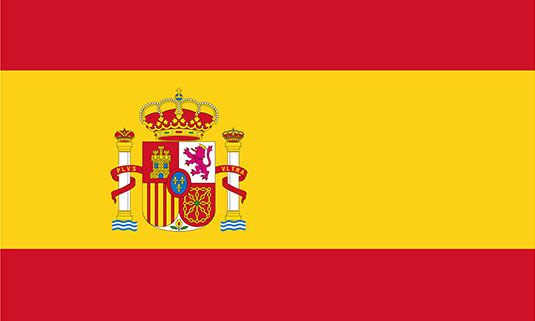How To Measure Hydraulic Cylinder
CONTENTS
1. Article Introduction
2. Measure Tools
3. Measureing a Hydraulic Cylinder Steps
4. Summary
One question that AiSoar's team is always answering is: What information do I need to replace my hydraulic cylinder? “How to measure my hydraulic cylinder ”This article is here to address that exact concern, walk you through measuring the size of your hydraulic cylinder, and provide the information needed to replace your cylinder.
Incorrectly measuring a hydraulic cylinder can lead to equipment malfunctions, costly repairs, and extended downtime. To prevent these issues, it's essential to follow precise measurement procedures.
Accurately measuring a hydraulic cylinder involves determining key dimensions such as bore diameter, rod diameter, and stroke length to ensure proper fit and function.
By mastering these measurement techniques, you can ensure optimal performance and longevity of your hydraulic systems. Let's delve into the step-by-step process.
Piston rod cylinder - contains a piston and can be single or double acting
Plunger cylinder - a single acting cylinder (for example, a snow plow cylinder).
Telescopic cylinder - has multiple stages and can operate in single or double action.
The following are the primary characteristics of hydraulic cylinders:

To measure a hydraulic cylinder accurately, you’ll need a few key tools. Here’s a list of the most commonly used tools:
| Caliper (Vernier or Digital) | Calipers can provide precise measurements down to a fraction of a millimeter or inch, making them ideal for determining bore and rod diameter. |
| Micrometer | Micrometers are especially useful for measuring the rod's diameter where precise readings are critical. |
| Tape Measure or Ruler | A flexible tape measure is ideal for measuring the length of the cylinder or rod, while a rigid ruler can help with smaller, more straightforward measurements. |
| Thread Gauge (or Pitch Gauge) | This tool is essential for determining the exact size of threaded connections to ensure compatibility with the hydraulic hoses and fittings. |
| Feeler Gauges | Feeler gauges help in determining tight tolerances, which can be critical when measuring sealing surfaces and the fit of the rod inside the cylinder. |
| Digital Depth Gauge | A digital depth gauge allows you to quickly measure from the base of the cylinder to the tip of the extended rod. |
| Hydraulic Pressure Gauge | This is not a measurement tool in the traditional sense but helps ensure that the cylinder operates within the specified pressure range. |
| Protractor or Angle Finder | the cylinder’s rod end may operate at an angle, and an angle finder can be useful to check the precise orientation. |
| Dial Indicator (Optional) | A dial indicator can help assess the straightness of the rod, which is important for ensuring load-bearing capabilities. |
| Surface Plate (for Accuracy) | A flat, level surface provides more accurate readings when measuring lengths, diameters, and other key dimensions. |
Measureing a Hydraulic Cylinder Steps:
Check for Nameplate or Part Number Information
Begin by inspecting the cylinder for a nameplate or part number, typically located on the body. This information often provides specifications like bore size, rod diameter, and stroke length, which can simplify the measurement process and ensure accuracy.
Measure the Bore Diameter
Piston diameter or inside barrel diameter is the main dimension of the hydraulic cylinder and known in the hydraulic industry as “BORE”. Therefore it has to be measured first. If your cylinder is taken apart, simply measure either inside diameter of the barrel (cylinder tubing) or measure actual bore diameter across.
For assembled cylinders,measure the outer diameter of the cylinder and subtract the wall thickness of the tubing.
Step 1
Measure the cylinder outside diameter,then subtract the cylinder wall thickness.
For example:Cylinder outside diameter is 90mm,generally the wall thickness is 5mm and above,We can calculate that the cylinder bore diameter is equal to 90-52,the bore diameter is 80mm and below
Step 2:
Gerernally the bore diameter is twice the rod diameter,we can caculate the bore diameter according the rod diameter.If the rod diameter is 45mm through measurement,then the bore diameter is 45mm2, about 90mm.
Measure the Rod Diameter

The rod diameter is vital for assessing the cylinder's strength and load-bearing capacity.The rod of the hydraulic cylinder is a round chrome plated steel bar that performs reciprocating motion. Using a micrometer or caliper, measure the diameter of the rod that extends from the cylinder. Caliper can easily take care of rod measurement. Simply measure the rod diameter (thickness) with a caliper. Rod is one of the most significant parts of the hydraulic cylinder because the main force during operation applies on the rod. Proper analysis of rod size and specifications will prevent bend rod situation.
Measure the Retracted Length of the Cylinder Rod

The retracted length is the total length of the cylinder when the rod is fully retracted. the measured value is from the center of the pin to the center of the pin. This dimension is essential for ensuring the cylinder fits within the designated space when not in use.
Measure the Extended Length of the Cylinder Rod

The extended length is the total length of the cylinder when the rod is fully extended. Measure from the base of the cylinder to the end of the rod in its extended state. This measurement helps determine the cylinder's reach and is crucial for applications requiring specific extension lengths.Just like with retracted length, use tape measure.
Measure the Stroke

The stroke length indicates how far the rod extends from its retracted position. To measure, fully extend the rod and measure the distance from the end of the cylinder to the end of the rod.
The measured value is the extension length of the hydraulic cylinder minus the retracted length .Stroke = Extended Length – Retracted Length.
Determining Rod End Style
Rod ends come in various styles, such as threaded, clevis, or eyelet designs. Identify the rod end style by examining the connection point at the end of the rod. Accurate identification ensures compatibility with the machinery or equipment the cylinder operates.

After we've recorded all of the cylinder's primary dimensions, we may go on to the secondary ones. There are thousands of different ways to attach a hydraulic cylinder on machines. Every original equipment manufacturer designs their own product. The most common style of mounting, however, is one with pivot pins. These pins link either end of a hydraulic cylinder to an equipment frame. As a result, pivot pin diameter must be checked using a caliper to ensure that hydraulic cylinder replacement may be put on your apparatus.Standard cylinders are clevis and cross tube mounting. Clevis Mounting looks the letter U and is often referred to as bunny ears.
Identify Size and Location of Cylinder Hose Ports
Hydraulic cylinders have ports for fluid intake and outflow. Use a thread gauge and caliper to measure the thread size and pitch of each port. Additionally, note the location of each port on the cylinder body to ensure proper hose routing during installation. The most common design features female ports on the cylinder and requires male hose crimps to be connected.
Every hydraulic port has two other important designations, including thread type and size. For reference:
Hose Sizes:
- ¼-inch
- ⅜-inch
- ½-inch
- ¾-inch
Thread Types:
- SAE (O-Ring Boss)
- NPT (National Pipe Thread)
- JIC (Joint Industry Council)
If the cylinder you’ve selected has a different thread than the hose, an adapter can be used to ensure the correct connection. The port sizes listed above represent just a few of the available options for hydraulic cylinders. Additionally, the OEM may offer custom port designs tailored to specific applications. Always verify the port size carefully before proceeding.
To measure hydraulic cylinder ports, use a thread gauge and caliper to identify the thread pitch and size. Alternatively, you can use a known fitting to assess the thread type and size
Port location is also essential. Ports can be located on the top, sides, or bottom of the cylinder.
Keep Environment in Mind
Consider the operating environment of the hydraulic cylinder, including factors like temperature, exposure to corrosive substances, and humidity. These conditions can affect material selection and seal types, influencing the cylinder's longevity and performance.
Determine the Working Pressure
The last but not least step is to arbitrate the working pressure of the hydraulic system. Despite enormous selection of hydraulic cylinders out there, most of the hydraulic applications work at 2500 – 300 PSI pressure. This pressure rating is sufficient to perform most of the hydraulic applications.
Compare to Manufacturer Drawing
The final step in the process is to compare your measurements to a manufacturer’s drawing before you order. Cylinders drawings can be configured using our manufacturer’s configuration tools. A two-dimension or three-dimension drawing can be provided in most cases. Aisoar requires a signature verifying the dimensions of a cylinder on all orders. It ensures that we get it right the first time and provides a good record for future orders.Any more question for the hydraulic cylinder,please contact follow information.
Summary
Accurate measurement of a hydraulic cylinder is essential for optimal performance and longevity. By following these steps, you can ensure your hydraulic systems operate efficiently and safely.

Hangzhou Aisoar hydraulic technology Co.,Ltd
Tel: 86-571-87920309
Fax: 86-571-87926329
Mob&Wechat&Whatsapp: +86 13588456446
Email:sales@ai-soar.com


 ES
ES RU
RU

